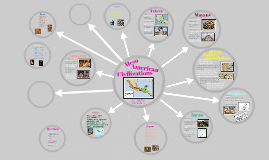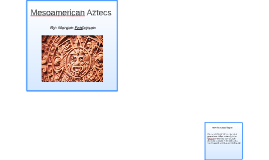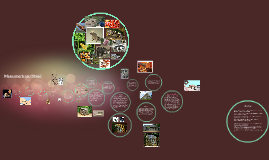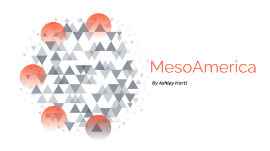Mesoamerican:
Transcript: La Venta was the most prominent Olmec center and lasted for about 500 years, and they sustained Olmec cultural decisions but displayed great power and wealth. La Venta Olmec stonemasons carved giant basalt heads. They may represent Olmec rulers. At any rate they are shown wearing the helmets players wore during the rubber ball game. These huge heads are 3 meters high and weigh more than 20 tonnes. Archeological record does not include explicit representation of Olmec bloodletting, researchers have found other evidence that the Olmec ritually practiced it. For example, numerous natural and ceramic stingray spikes and maguey thorns have been found at Olmec sites, and certain artifacts have been identified as bloodletters. There is an arguement that the Olmec did not sacrifice it is only speculated that they did. There is no known evidence of tools used in sacrifice. The most recognized aspect of the Olmec civilization are the enormous helmeted heads Concept of Zero Bloodletting and Sacrifice Speculations San Lorenzo was the first Olmec center and was abandoned around 900b.c. It is believed that there was an internal uprising or invasion that led to the decline of San Lorenzo. The latest thinking is environment changed could have been the reason the center was abandoned. Art San Lorenzo Social and Political Organization Military and Standing Armies The Olmec were the first civilization in the Western Hemisphere to develop a writing system. Tombs The villages were located on higher ground and consisted of several scattered houses. Individual dwelling a house had a storage pit, nearby garden, and fruit trees available. River banks were used to plant crops between flooding periods and fields were located outside of the village. The Olmec's lands were prone to flooding. So Olmec farmers built their houses on artificial hills. However the floods did deposit silt and mud, which made the land fertile. So Olmec farmers were able to grow two crops a year. The ball game was created for recreational and religious purposes. A dozen rubber balls dating to 1600 BCE or earlier have been found in El Manatí, an Olmec sacrificial bog 10 km (6.2 mi) east of San Lorenzo Tenochtitlan.These balls predate the earliest ball court yet discovered at Paso de la Amada, circa 1400 BCE, although there is no certainty that they were used in the ballgame. Considered an important realization of Olmec mythology. The youth holds a were-jaguar infant, while four iconic supernaturals are incised on the youth's shoulders and knees. The Olmec practiced slash and burn to create fields for crops such as maize, various squash, and sweet potatoes, as well as cotton. The Olmec were the first major civilization in Mexico. They lived in the tropical lowlands of south-central Mexico, in the modern-day states of Veracruz and Tabasco. The Olmec flourished between 1500 BCE to about 400 BCE Through research their is evidence that there were long distance trade networks. High value materials like green stone and marine shell were moved in significant amounts along long distances. During the Olmec period there was a significant expansion of inter regional trade routes. Olmec merchants traded with many other cultures. They lived in jungles, which had abundant plant and animal life. However they lacked mineral resources. Obsidian, chert and jade had to be brought from far away. In return for them the Olmecs traded jaguar skins and feathers. The were-jaguar was both an Olmec motif and a supernatural entity, perhaps a deity. Village Life Long Count Calender Sources The Long Count calendar required the use of zero as a place-holder within its vigesimal (base-20) positional numeral system. A shell glyph –MAYA-g-num-0-inc-v1.svg – was used as a zero symbol for these Long Count dates, the second oldest of which, on Stela C at Tres Zapotes, has a date of 32 BCE. This is one of the earliest uses of the zero concept in history. Trade System of writing/records They didn't have a standing army or any militaristic tactics. There is no evidence that the Olmec had any warlike activity. The Olmec culture was once defined as an art style and made cutting tools from hard stone like chert and from obsidian (volcanic glass, which when cut is extremely sharp). Jade was used to make ceremonial axes and jewelery. Coe, Michael D., and Rex Koontz. Mexico: From the Olmecs to the Aztecs, 6th ed. London: Thames & Hudson, 2008. Diamond, Jared. Guns, Germs & Steel: The Fates of Human Societies. New York and London: W. W. Norton, 1997. Leon-Portilla, Miguel. Fifteen Poets of the Aztec World. Norman, OK: University of Oklahoma Press, 1992. Mann, Charles C. 1491: New Revelations of the Americas before Columbus. New York: Alfred Knopf, 2006. “Olmec.” Wikipedia.org. Wikipedia.org. 18 March 2014. 18 March 2014. http://en.wikipedia.org/wiki/Olmec “Were-Jaguars.” Wikipedia.org. Wikipedia.org. 7 August 2014. 18 March 2014. http://en.wikipedia.org/wiki/Olmec_were-jaguar "A BRIEF HISTORY OF THE OLMECS."

















